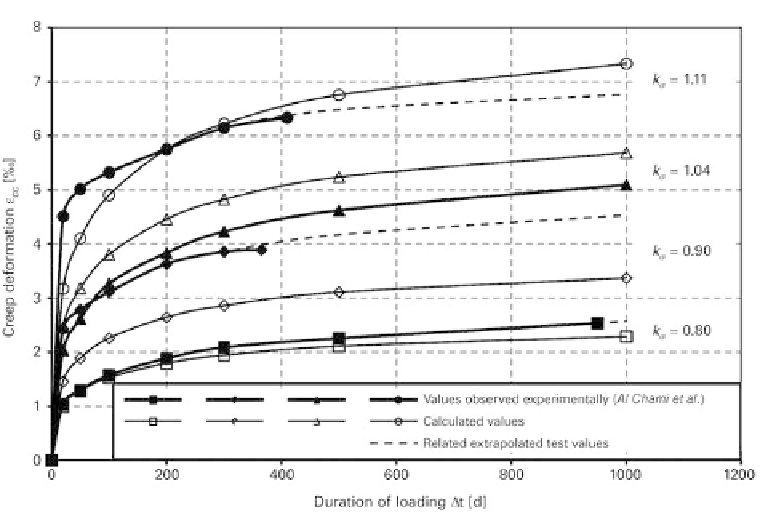Civil Engineering Reference
In-Depth Information
Fig. 7.8
Comparison of development of creep deformations over time observed in the tests by
Al Chami et al.
[140] and calculated deformations
7.6 Analysis at Ultimate Limit State
The semi-empirical model of
Jiang
[135], extended by the expressions described above,
will be used for the analysis at the ultimate limit state. To do this, the concrete compressive
strength
f
cc
of the reinforced concrete compression member with internal reinforcing steel
and a wrapping of CF sheet will be used in conjunction with the equation for determining
the ultimate strain that can be taken for the CF sheet. The effects of the creep of
compression members with a wrapping of CF sheet are also taken into account in the
ultimate limit state analyses required by the DAfStb guideline [1, 2]. Further, the effects of
creep - also with respect to the increase in curvature - are considered in calculations
according to second-order theory. This is taken into account practically according to
section 5.8.3.3 of DIN EN 1992-1-1 [20, 21] by increasing the curvature by the factor
K
φ
,
the value of which is linearly dependent on the effective
final creep coef
cient
φ
ef
.From
the context of DIN EN 1992-1-1, this method can also be used in the range of non-linear
creep, which is especially important for strengthened columns.
Of course, the characteristic values of the material strengths have been used in the
formulations for design at the ultimate limit state. The creep deformation
ε
cc
has a
loadbearing-reduction effect on the strain that can be assumed for the confining
reinforcement and so the factor
α
k
was introduced, which takes into account the
coefficient of variation 0.3 commonly given in the literature (see [62], for example)
for creep deformations. The partial safetyfactorsgiveninsection2.4.2.4ofDINEN

Search WWH ::

Custom Search